#Serpentine Galleries London 2014
Text


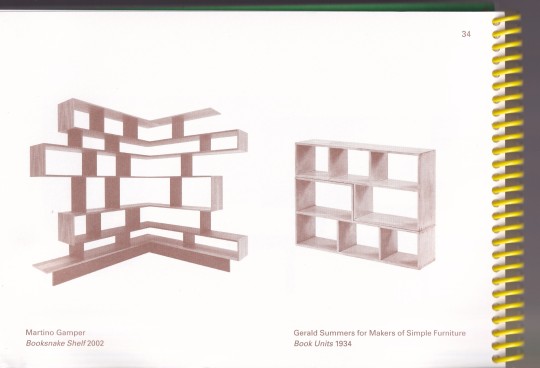
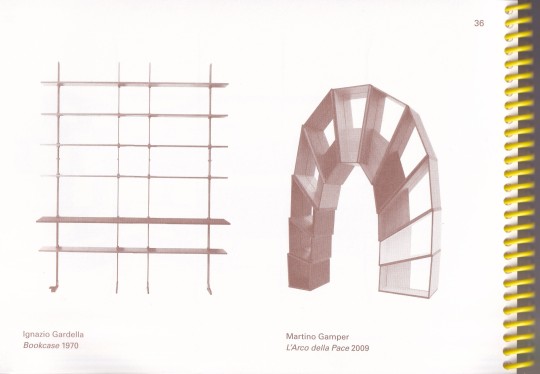
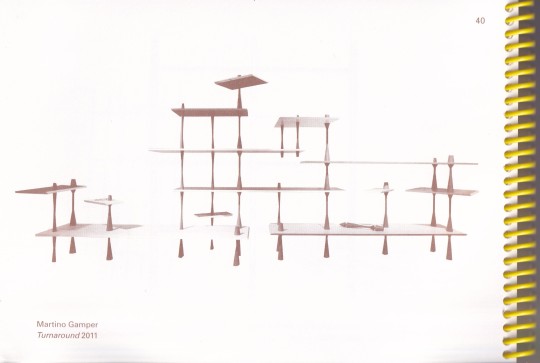

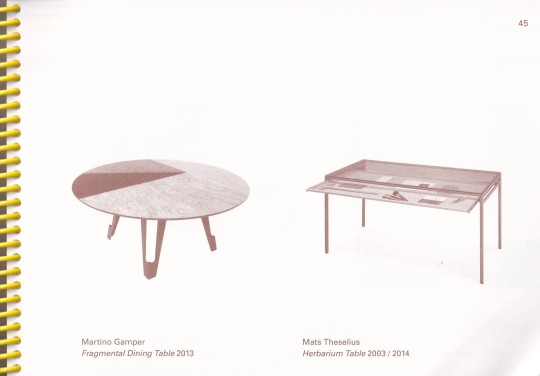


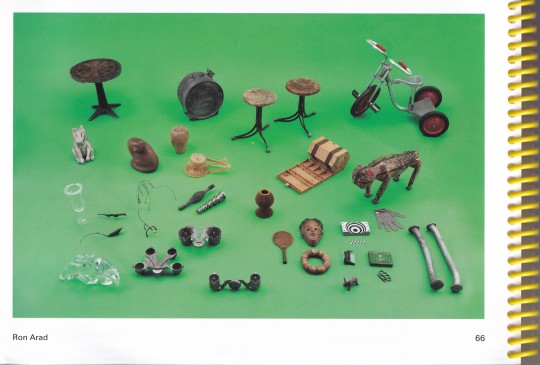
Design is a state of mind
Martino Gamper
a cura di Martino Gamper, Rebecca Lewin, Jochen Volz e Melissa Larner. Design: Åbäke e Alex Rich
Serpentine Galleries / Koenig Books, London 2014, italiano/inglese, 96 pagine, ISBN 978-3863355418
euro 60,00
email if you want to buy [email protected]
Design is a state of mind: l’esposizione mette in luce la storia degli oggetti di design e del loro impatto sulla nostra vita con un’ampia selezione di sistemi di scaffalatura dal 1930 ai giorni nostri. Muovendosi in un raggio che comprende classici del design storico, pezzi unici, lavori di design industriale e funzionale contemporanei, o comunque commissionati recentemente, saranno esposti i progetti di Gaetano Pesce, Ettore Sottsass, Ercol, Giò Ponti e IKEA. Ogni elemento espositivo verrà utilizzato per organizzare ed esporre collezioni di oggetti dagli archivi personali di amici e colleghi di Gamper, oltre ad un’ampia biblioteca di pubblicazioni sui mobili contemporanei da tutto il mondo.
Per l’occasione verranno inoltre realizzate nuove scaffalature di Michael Marriott e dello stesso Martino Gamper, co-prodotte dalla Serpentine Gallery, Museion e dalla Pinacoteca Agnelli.
“Non esiste un design perfetto e non c’è un ultra design. Gli oggetti ci parlano in maniera personale. Alcuni dovrebbero essere più funzionali di altri e l’impatto emozionale che hanno su di noi rimane molto individuale. La mostra mette in evidenza un modo molto personale di collezionare e raccogliere oggetti, con pezzi che raccontano una storia.”
Martino Gamper
Mostra Serpentine Galleries London (05/03- 21/04/2014) e la Pinacoteca Giovanni e Marella Agnelli Torino (24/10/14 – 01/03/2015).
14/12/23
#Martino Gamper#design exhibition catalogue#Serpentine Galleries London 2014#Gaetano Pesce#Ettore Sottsass#Giò Ponti#IKEA#designbooksmilano#fashionbooksmilano
9 notes
·
View notes
Text
Haim Steinbach
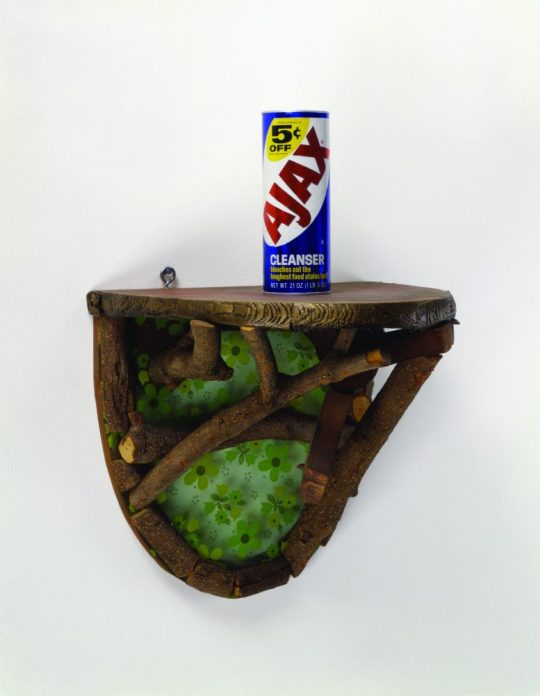
Shelf with Ajax, 1981

Shelf with Annie Figurine, 1981

Installation view from the exhibition once again the world is flat. Serpentine Gallery, London (5 March - 21 April 2014)

Installation view from the exhibition once again the world is flat. Serpentine Gallery, London (5 March - 21 April 2014)
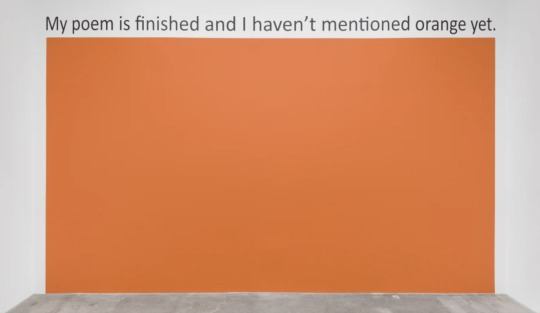
MY POEM IS FINISHED AND I HAVENT MENTIONED ORANGE YET, 2019
Found text from “Why I Am Not a Painter” by Frank O’Hara; matte black vinyl; acrylic paint
5 notes
·
View notes
Text
Paranoia as a design process
“It's not doubt that makes you mad, but certainty”. Nietzsche

Critical-Paranoid Method, New York Délir, Rem Koolhaas (1978).
Paranoia is based on a type of thinking that redirects every fact to confirm its own biases. This is why the paranoid is always right. His distrust, inability to correct himself, and conviction are the ingredients for an activity that ties up all the details to confirm his conspiracy theories.
However, thanks to the ability to link unrelated events, and at the same time being diagnosed as a mental illness, paranoia was seen as a creative and refreshing new possibility.
Paranoia was an extraordinary way of stitching together the different realities that the early 20th century had to deal with. Dalí, dreamer of forms, was the inventor of a system based on this disorder which he called “the paranoid-critical method” (or MPC). He described it as "a spontaneous method of irrational knowledge based on the critical and systematic objectivity of associations and interpretations of delusional phenomena".
After we made all the possible logical associations, the critical paranoid method assumed the possibility of linking the impossible. So it was an invincible glue. It had a capacity of adhesion which made it possible to sew the background with the figure, the forms with their hardness or their textures, and the images with their shadows... However, unlike collage, the MPC has the power to make two ideas react different in explosive chemical reaction. Even the Cartesian and Corbusian criticisms could not serve as an extinguisher or a tame. It is therefore not surprising that it took so many years to apply it to architecture.
It was Rem Koolhaas, in 1978, who took it up in his book “Delirious New York” through this illustration of soft amorphous softness, supported by a wooden crutch. Dreamlike, absurd and unprovable conjectures had to be upheld with the stick of critical Cartesian rationality, according to Koolhaas. In reality, the paranoid critical method was a therapy for architecture and a way of reviewing one's own logic. Moreover, he avoided talking about consistency. It was like cheating "forcing a piece in a puzzle to fit, even if it doesn't."
“Through conceptual recycling, the consumed and spent content of the world can be recharged or enriched like uranium, and […] a simple process of interpretation will create an inexhaustible reservoir of false facts and evidence. invented” – Rem Koolhaas, New York Delirium, p.241
Of course, once the paranoia sets in, there's no one to stop these interpretations: wasn't that soft shape the concrete, and that wooden support the formwork? Or the relationship between enclosure and structure? Or the flowing Camembert that Dalí had stumbled upon in his fridge in the middle of the night, which struck him instantly and led him to create his famous painting “The Persistence of Memory”? Hence Dalí's double-image theory, which can be read simultaneously in at least two different ways, but which potentially only has a limit where the paranoid interpretation of the viewer ends. It is about the phenomenon which makes it possible to read a recognizable form in an abstract matter such as Dalí created with his melted watches, his canapes in lips or his deformed animals.
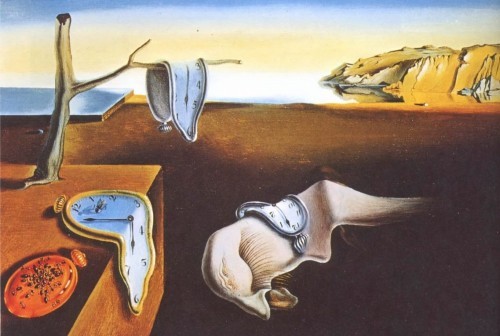
The Persistence of Memory, Salvador Dalí (1931).
The successes of the critical paranoid method seem almost forgotten today. Because today, it is difficult to explain certain contemporary works (Brandlhuber, Valerio Olgiati, Johnston Marklee and even Smiljan Radic) without seeing some of these paranoid critical gestures appear.
Therefore, when we see those brief nonsensical explosions or certain crazy things in a corner, we have to look closely, because it may not be the gesture of mere exaggeration or graceful forgetfulness, but the small chemical explosion produced by critical paranoid method.
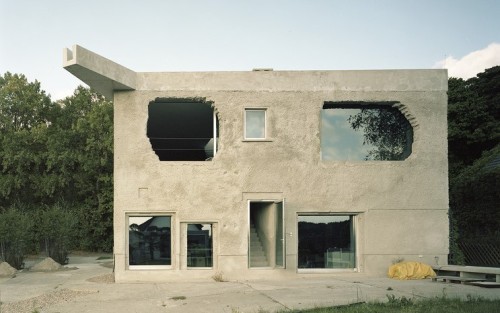
Antivilla, Potsdam (Germany), Brandhulber+ (2014).
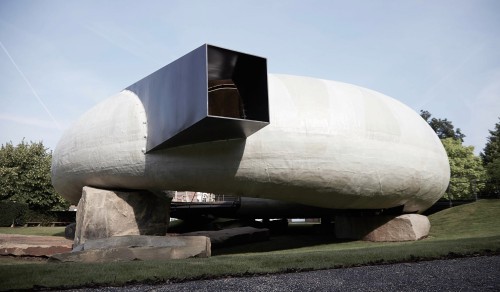
Pavilion for the Serpentine Gallery, London, Smiljan Radic (2014).
0 notes
Text
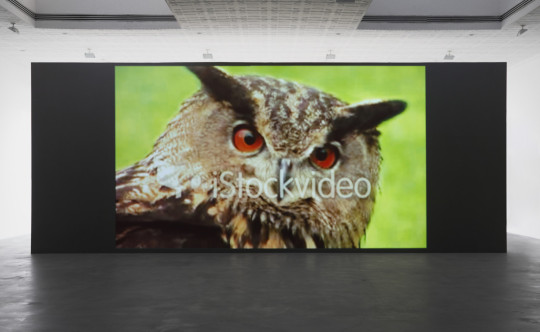


It was one clip of many, but Sturtevant loved using this HD 16:9 horned owl closeup she ganked from iStockvideo in her artworks about the cybernetic media networks we're encased in.
[images: simulacra, 2010, 16:9 single channel piece installed at matthew marks gallery, oct. 2022; inverted flatscreen pyramid of rock & roll simulacra, act 3, 2013, installed at the serpentine galleries in london, 2013; and owl wallpaper in moma's double trouble, sturtevant retrospective in 2014-15]
#sturtevant#horned owl#serpentine galleries#simulacra#matthew marks gallery#warholian wallpaper#16:9 the aspect ratio of the day#o rly?
1 note
·
View note
Text
Grayson Perry Notes
Podcast 4 Notes
About finding yourself
How do we become contemporary artists, are we born with talent, is everyone an artists
The trauma we have came by can be made into art
Art is a universal vessel for expressing contempt
However some are happy, although we all have a story with a significance
Art can be a escapism
Therapy and art can become one
Arts role is to make meaning
Art can help lose yourself, like as a child
Becoming an artists, it needs college as its deficit without it
Art school is about self consciousness, torturing which prepares you for the world
Art college for freedom, mistakes and exploring
Art is accepting outsiders
Looking into Grayson Perry
Grayson Perry (born 1960) is an English contemporary artist, writer and broadcaster. He is known for his ceramic vases, tapestries, and cross-dressing, as well as his observations of the contemporary arts scene, and for dissecting British "prejudices, fashions and foibles".Perry's vases have classical forms and are decorated in bright colours, depicting subjects at odds with their attractive appearance. There is a strong autobiographical element in his work, in which images of Perry as "Claire", his female alter-ego, and "Alan Measles", his childhood teddy bear, often appear.He has made a number of documentary television programmes and has curated exhibitions. He has published two autobiographies, Grayson Perry: Portrait of the Artist as a Young Girl (2007) and The Descent of Man (2016), written and illustrated a graphic novel, Cycle of Violence (2012), written a book about art, Playing to the Gallery (2014), and published his illustrated Sketchbooks (2016). Various books describing his work have been published. In 2013 he delivered the BBC Reith Lectures.Perry has had solo exhibitions at the Bonnefantenmuseum, Stedelijk Museum Amsterdam, the Barbican Centre, the British Museum and the Serpentine Gallery in London, the Arnolfini in Bristol, The Andy Warhol Museum in Pittsburgh, and the 21st Century Museum of Contemporary Art, Kanazawa, Japan. His work is held in the permanent collections of the British Council and Arts Council, Crafts Council, Stedelijk Museum Amsterdam, Tate and Victoria and Albert Museum, London. He was awarded the Turner Prize in 2003. He was interviewed about the win and resulting press in Sarah Thornton's Seven Days in the Art World.In 2008 he was ranked number 32 in The Daily Telegraph's list of the "100 most powerful people in British culture".In 2012, Perry was among the British cultural icons selected by artist Peter Blake to appear in a new version of his most famous artwork—the Beatles' Sgt. Pepper's Lonely Hearts Club Band album cover—to celebrate the British cultural figures of his life.
0 notes
Photo

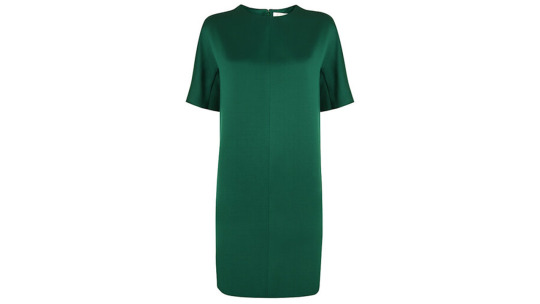
A Royal Recycling (part 24)
Chloé
#princess eugenie#eugenie#eugenie of york#eugeniepast#my edit#a royal recycling#Royal Recycling#chloé#dress#2014#2016#uk#usa#new york#amfar gala#cipriani wall#london#Serpentine Future Contemporaries x Harrods Party#serpentine sackler gallery#british royal family#royal fashion#fashion#style#party#harrods
4 notes
·
View notes
Text
Albert Oehlen at the Marciano Art Foundation, Los Angeles
June 4, 2021

ALBERT OEHLEN
Tramonto Spaventoso
June 10–August 7, 2021
Gagosian at the Marciano Art Foundation, 4357 Wilshire Boulevard, Los Angeles
__________
Gagosian is pleased to present Albert Oehlen’s Tramonto Spaventoso (2019–20). This is the first time that Oehlen’s provocative and personal response to the Rothko Chapel in Houston is being exhibited in its entirety; the first part was shown at the Serpentine Galleries, London, in 2019–20, the second at Gagosian Beverly Hills earlier this year. The paintings are installed in a custom-built octagonal structure in the Grand Theater Gallery of the Marciano Art Foundation, reflecting the layout of the original chapel.
Oehlen uses abstract, figurative, and collaged elements—often applying self-imposed strategic constraints—to disrupt the histories and conventions of modern painting. While championing self-consciously “bad” painting characterized by crude drawing and jarring coloration, he infuses expressive gesture with Surrealist attitude, openly disparaging the quest for reliable form and stable meaning.
In the eight large-scale paintings that constitute the Tramonto Spaventoso project, Oehlen variously interprets and dramatically transforms John Graham’s Tramonto Spaventoso (Terrifying Sunset, 1940–49), a painting by the Russian-born American modernist that Oehlen discovered in the 1990s and has been fascinated with ever since.
In a startling act of creative homage, Oehlen interprets Graham’s puzzle-like image in myriad ways across multiple compositions. Using acrylic, spray paint, charcoal, and patterned fabric on canvas, he reworks various motifs from the original, including a mermaid and a man sporting a monocle and a Daliesque moustache. Combining graphic brushstrokes, deliberate “painterly” drips, and textural obfuscations, he tests the limits of coherence and legibility, challenging the viewer with unexpected aesthetic and thematic shifts.
The work is illustrated in the catalogue recently published on the occasion of the Beverly Hills exhibition.
Albert Oehlen was born in 1954 in Krefeld, Germany, and currently lives and works in Switzerland. Collections include the Broad, Los Angeles; Museum of Contemporary Art, Los Angeles; Art Institute of Chicago; Museum of Contemporary Art North Miami, FL; Cleveland Museum of Art; Museum of Modern Art, New York; Museo Jumex, Mexico City; Tate, London; Centre Pompidou, Paris; Museum Ludwig, Cologne, Germany; and Museum für Moderne Kunst, Frankfurt am Main, Germany. Exhibitions include Museo di Capodimonte, Naples, Italy (2009); Réalité Abstraite, Musée d’Art moderne de la Ville de Paris (2009); Terpentin, Kunstmuseum Bonn, Germany (2012); Malerei, Museum Moderner Kunst Stiftung Ludwig Wien, Vienna (2013); 55th Biennale di Venezia (2013); Die 5000 Finger von Dr. Ö, Museum Wiesbaden, Germany (2014); Home and Garden, New Museum, New York (2015); An Old Painting in Spirit, Kunsthalle Zürich (2015); Behind the Image, Guggenheim Bilbao, Spain (2017); Woods near Oehle, Cleveland Museum of Art (2018); TRANCE, Aïshti Foundation, Beirut (2018); Cows by the Water, Palazzo Grassi, Venice (2018–19); Unfertig, Lokremise Kunstmuseum St. Gallen, Switzerland (2019); and Serpentine Galleries, London (2019–20).
_____
Albert Oehlen, never sleep again / at the steering wheel a man is a man / starter – turn me on, 2019, charcoal and acrylic on canvas, in 3 parts, overall: 145 7/8 × 245 7/8 inches (370.4 × 624.3 cm) © Albert Oehlen. Photo: Jeff McLane
34 notes
·
View notes
Photo

1 July 2014 | Princess Eugenie attends the annual Serpentine Galley Summer Party at The Serpentine Gallery in London, England. (c) Stuart C. Wilson/Getty Images
12 notes
·
View notes
Photo

Andrea Branzi Wall bookshelf, 2011.
Installation view from the exhibition design is a state of mind, Serpentine Sackler Gallery, London, (5 March - 21 April 2014).
Photograph: Hugo Glendinning
8 notes
·
View notes
Text
Serpentine Pavilions
As you know, since the year 2000, the Serpentine Gallery in London invites a different architect from around the globe to design an annual pavilion set to be built at the entrance/garden of such place. The gallery gives them a budget and total freedom of design, however, it does require them a sitting area to have lectures, eat, contemplate the gardens and so on.
Since I wanted a justification and say why my personal favorite is the best, I decided to rank every one of them. Listen, I have my personal preferences when it comes to architecture but I tried to be a little bit more neutral here.
So here they are, from worst to best:
20. The lounge (2010). Jean Nouvel.
Sir, you were commissioned to design a pavilion; this is a sports bar/lounge area, visitors are feeling excluded. Please, leave the room.
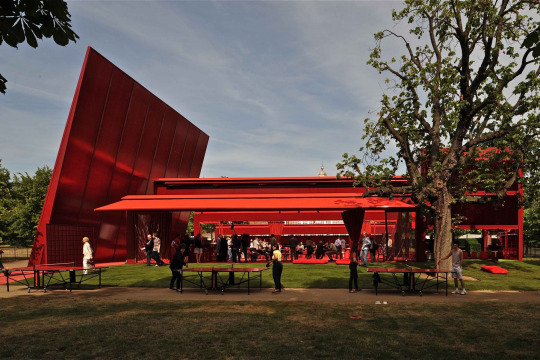
19. The mountain (2004). MVRDV.
These architects ignored their budget and their pavilion was never built; they wanted to cover the gallery under a huge mountain but, why would you persuit that artistic idea when Christo already exists?

18. The tunnel (2015). Selgas Cano.
This tunnel simply goes to nowhere. You enter and there’s not so much to do in there... then you go out.

17. The stone hill (2019). Junya Ishigami.
Half of Ishigami’s idea was borrowed from SAANAS’ pavilion from ten years earlier. But the hillside effect outside and underneath were kind of cute.
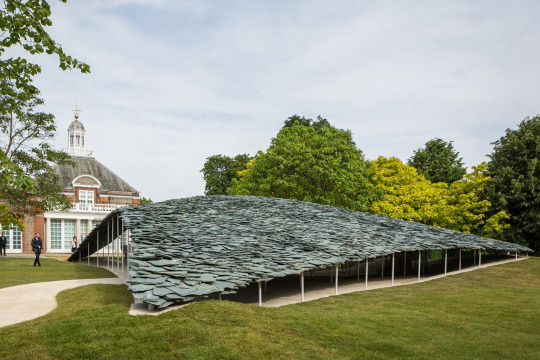
16. The theatre (2007). Kjetil Thorsen & Olafur Eliasson.
This was just so… over designed…

15. The chapel (2016), Bjarke Ingels.
This is a great entrance hall to the gallery, I give him that. However, Mr. Bjarke “idea” was not something new, Sou Fujimoto had a similar aproach three years earlier.

14. The old school roof (2005). Alvaro Siza & Edoardo Souto de Moura.
These two were like, “just call the engineer”.

13. The balloon (2006). Rem Koolhaas.
This was one of the few pavilions that didn’t require a huge effort to be built, but it did have an effective impact on the landscape. Take a note, MVRDV.

12. The terrace (2003). Oscar Niemeyer.
Somehow, Oscar Niemeyer made a pavilion about himself… but it was great. A little bit less of its “wine tasting room” vibe would have been great.

11. The donut (2014). Smiljan Radic.
Playful, useful and family friendly.

10. The structure (2002). Toyo Ito.
Toyo Ito said “I’m gonna give you structure, I’m gonna give you views and something for the architecture students to copy over and over again”.
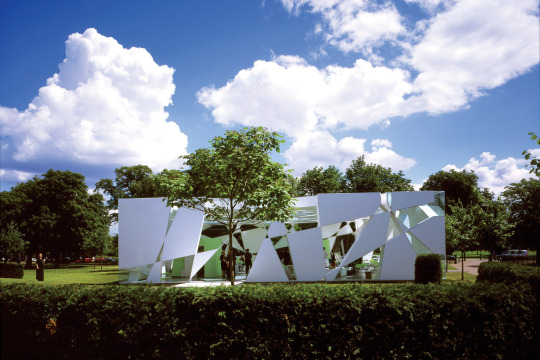
9. The garden (2011). Peter Zumthor.
Zumthor decided that the gallery garders were too sterile, so he gave then an actual garden to contemplate.
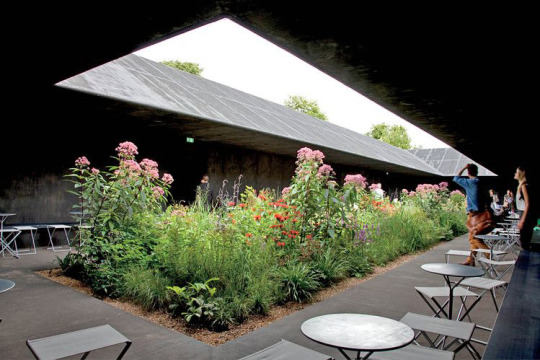
8. The mirror (2009). SAANA.
Sejima and Nishizawa know western architects are too invasive, so they tried to deliver the less possible: a roof that hiddens with the reflection of the garden.

7. The Maya ball field (2008). Frank Gehry.
He really paid respect to the gallery behind by making it the pavilion’s focal point. Not to mention the grandstand was used for a great variety of activities.

6. The origami (2001). Daniel Libeskind.
This structure just has so many posibilites. You bring your kids, they play around; you have a conference, you have a shelter, you want a sculputure for your gallery, you got it.

5. The 3D sketch (2013). Sou Fujimoto.
Fujimoto sketched a bunch thin lines for his pavilion, then he explained it to his team and said “I don’t want any strange structural elements to appear and fuck my idea”. And they made it happen.

4. The tent (2000). Zaha Hadid.
This was the first Serpertine Pavilion ever. Actually, the gallery only wanted a tent to celebrate their 30th anniversary but they wanted Hadid to design it. She had a very limited budget but that didn’t interfere to make a statement of her work.

3. The tree (2017). Francis Kéré.
Unlike other architects, Mr. Kéré had a very personal aproach for the pavilion; unlike Ingels, Kéré did have a concept. You see, since he was a child, he and his neighbors use to gather around a big tree and, underneath its shade, do a lot of different activities; social and school activities, even medical. That’s what he wanted the visitors to experience.

2. The excavation (2012). Herzog, de Meuron & Ai Weiwei.
The only pavilion underground, covered by a water mirror, a fountiain; as if they were trying to do a newer version of a classical garden. Just brilliant.

1. The celosía (2018). Frida Escobedo.
Unlike many of her predecessors, Frida Escobedo doesn’t have a particular “style” and her work isn’t very much known outside México. Her pavilion isn’t about her but it shows how great designer she is. It really has every requirement the Serpentine Gallery expects from the commisioners; it’s a bridge to the gallery, it’s a place to be in, it’s an object to be contemplated and to contemplate its sorroundings, it’s an imaginitive montage of simple materials; it is a great piece of architecture.

64 notes
·
View notes
Text
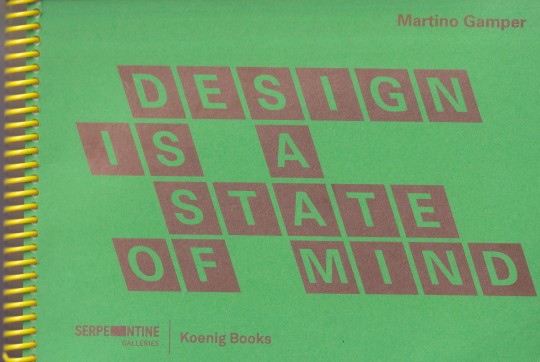






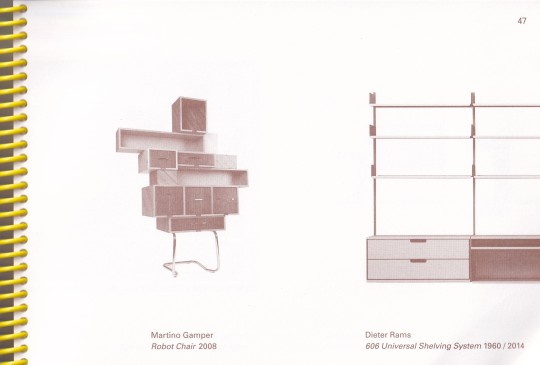

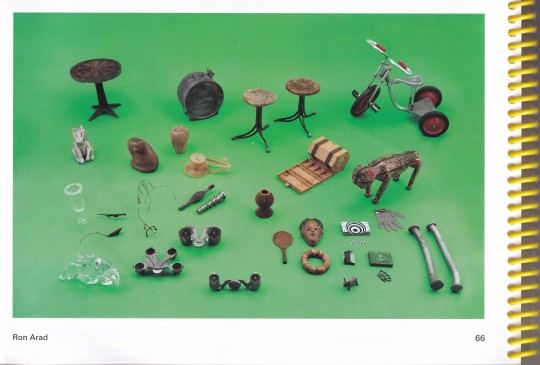
Design is a state of mind
Martino Gamper
Serpentine Galleries & Koenig Books, London 2014, 96 pages, 48 colour illustrations, 24x16,5cm, ISBN 978-3863355418
euro 60,00
email if you want to buy [email protected]
In the exhibition design is a state of mind, Gamper presented a landscape of shelving systems, telling the story of design objects and their impact on our lives. The pieces of furniture, arranged around the outer walls of the Serpentine North Gallery, dated from the 1930s to the present day and ranged from historic design classics and one-off pieces, to industrial, utilitarian, contemporary and newly commissioned work. Renowned designers such as Ettore Sottsass, Charlotte Perriand and Giò Ponti were placed in close proximity to IKEA and Dexion industrial shelves that together represented an eclectic history of the way that we display, archive and organise our most precious possessions. The function of each piece was underlined by the collections of objects arranged on them, which were chosen by Gamper from the personal archives of his friends and colleagues. From the beauty of the mundane to the wonder of the relic, these collections gave an insight into the inspirations and obsessions of designers.
28/12/23
#Martino Gamper#design exhibition cartalogue#Serpentine Gallery 2014#Andrea Branzi#Ignazio Gardella#Dieter Rams#Ron Arad#Ettore Sottsass#Gio Ponti#Charlotte Perriand#design books#designbooksmilano#fashionbooksmilano
7 notes
·
View notes
Text
제 4편 "Helen Marten"의 작업 및 전시 사진
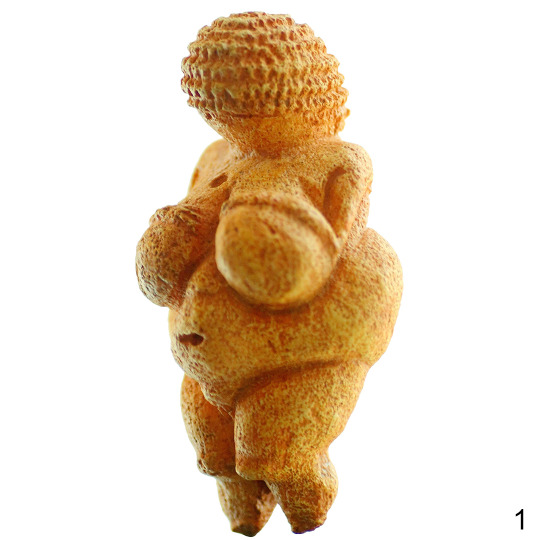





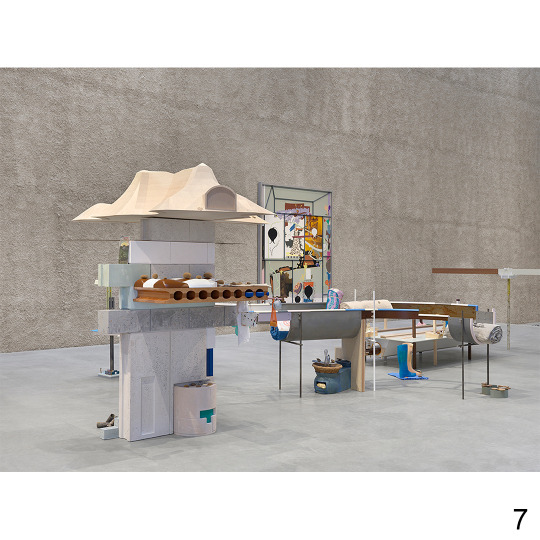


제 4편 "Helen Marten"의 작업 및 전시 사진
(순서대로)
1. Venus von Willendorf
2. Constantin Brancusi, Bird in Space, 1927, Los Angeles County Museum of Art, partial, fractional, and promised gift of Janice and Henri Lazarof, © Constantin Brancusi Estate/Artists Rights Society (ARS), New York/ADAGP, Paris
3. (Detail shot), Jessica Stockholder, 'Lay of the Land,' 2014
4. Helen Marten, Dust and Piranhas, animation video, sound, 2011, 6/6 + 2AP
5-6. (Installation view), Helen Marten, Drunk brown house, 2016, Image courtesy of Serpentine Sackler Gallery
7. Helen Marten, Fixed Sky Situation, KÖNIG GALERIE, 2019, Installation view by Annik Wetter
8. (Detail shot), Helen Marten, Plank Salad, 2013 at Chisenhale Gallery, London, Copyright © 2021 Sadie Coles HQ
/ (Detail shot) Helen Marten, Night-blooming genera
9. Helen Marten, The advent of a world-class economy, 2009. Courtesy: the artist and T293, Naples. Photo: Ken Adlard / Helen Marten, Bodybowl, 2014, © Foto: Annik Wetter
2 notes
·
View notes
Text
Smiljan Radic
Chilean architect, 52 years old, refering often to the nature and the environment. Repetable motif of a stone in his projects.
In particular, his work is influenced by the distinctive Chilean landscape, which is an intrinsic part of Radic’s identity and which resonates strongly in his architectural projects.
With his typical emphasis on the context of place, he manages to sensitively incorporate his buildings into their environment. Radic’s poetic works also make innovative use of materials, including new and fresh combinations thereof. Although they often oscillate between contradictory qualities such as strength/fragility, abstraction/reality, or durability/transience, his buildings always emanate a natural homogeneity.
The role of poetry and fables should be mentioned as well, for they have inspired more than a few of Radic’s projects. For instance, in 2010, Radic found inspiration from Oscar Wilde’s story The Selfish Giant when he created an experimental model entitled The Castle of the Selfish Giant, which he later expanded into the Serpentine Gallery Pavilion in London (2014).
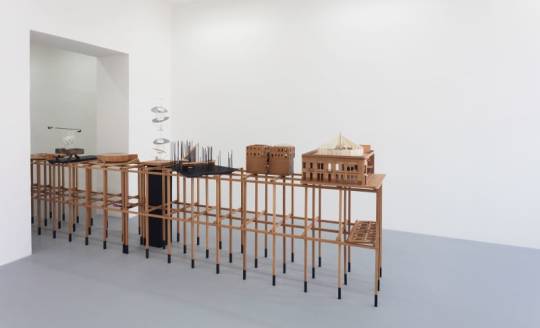
https://divisare.com/projects/345055-smiljan-radic-jan-mahr-bestiary?utm_content=buffera4bee&utm_medium=social&utm_source=facebook.com&utm_campaign=buffer
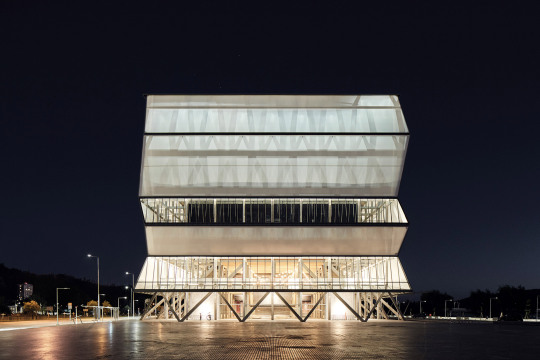
Teatro Regional del Biobio in Conception, Chile
The architects developed a design with a contrasting interior and exterior appearance, based on a quote by Polish theatre director Tadeusz Kantor: "My packagings were an attempt to 'portend' the nature of the object. By hiding it, enveloping it."
White fibreglass / weiße Glasfaser / biale wlokno szklane
Light shining through the facade at night lends the form the appearance of a paper lantern on the water's edge.
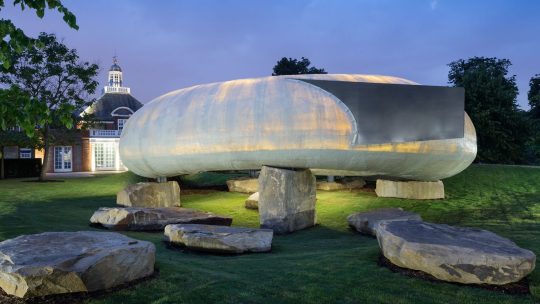
Serpentine Pavilion, 2014, white fiberglass
Smiljan Radić’s design for a temporary Pavilion has its roots in the architect’s earlier work, particularly The Castle of the Selfish Giant, a papier-mâché model inspired by the Oscar Wilde story, and the Restaurant Mestizo – part of which is supported by large boulders.

Bus stop in Bregenzwald
1 note
·
View note
Text
512 Hours by Marina Abramovic 6th August 2014
When it was announced that Marina Abramovic would be coming to London to show her piece ‘512 hours’, I knew that whatever it took I needed to see this performance.
As an iconic performance artist, the self-proclaimed 'Grandmother of contemporary performance art’. Abramovich has earned herself a loyal following of fans and fellow artists making her mere presence something of an event.
I attended the Serpentine Gallery on my own to be part of this piece, as I was to discover chatting to audience members in the queue, this may become a wise choice. Upon entering the space, you remove all bags, watches and phones to store in a locker room. An experience unto itself that was both liberating and anxiety provoking as I relinquished my beloved camcorder, which I would ordinarily use to document.
As I turned from my locker, there on a wooden bench sat a distinctly pale and formidable figure, Marina. She was talking with several members of the audience before we proceeded to the next room. Having donned a pair of ear defenders, my anxiety of what was to happen next became unbearable. In previous performances I have attended, being subject to a restriction of all my senses have led to not enjoying the work.
This, however, was the exception. After about an hour of various interactions, moments of stillness and moving to different spots within the gallery space, I found that I had managed to settle into a rhythm. After an hour or so, my pain threshold in my legs got the better of me and ended up curled up on the floor to rest. Sitting like this for some time made me very self-aware that I was not the only person to have to adjust to my new surroundings. After some time, one of Marinas assistance led me to another room where several of the audience are asleep on camp beds.
I was led to my camp bed and tucked up in a blanket. The assistant then motioned for me to close my eyes.
…………
After some time, my 'audience body clock’ told me it was time to leave. As I did so I reflected how the entire experience, though was produced and conceived by Abramovic was not about her presence.
It is as it always has been with her public work, an invitation for an audience to become the performer and for them to find their presence within the space.
1 note
·
View note
Text
Advanced Research Methods: Week 3. Gallery Visit - Olafur Eliasson - Pre-visit Research
Pre-visit research of the exhibition. I wanted to understand the purpose of the exhibition before visiting it to get the best experience possible. I added a couple of images; The Monk by the Sea and The Lonely Tree to better appreciate the colour wheels created from them.
The information below is available online from Tate Modern: https://www.tate.org.uk/art/artists/olafur-eliasson-5239
Olafur Eliasson - born 1967
BIOGRAPHY
Olafur Eliasson (Icelandic: Ólafur Elíasson; born 1967) is a Danish-Icelandic artist known for sculptures and large-scale installation art employing elemental materials such as light, water, and air temperature to enhance the viewer’s experience. In 1995 he established Studio Olafur Eliasson in Berlin, a laboratory for spatial research. Olafur represented Denmark at the 50th Venice Biennale in 2003 and later that year installed The Weather Project in the Turbine Hall of Tate Modern, London.
Olafur has engaged in a number of projects in public space, including the intervention Green river, carried out in various cities between 1998 and 2001; the Serpentine Gallery Pavilion 2007, London, a temporary pavilion designed with the Norwegian architect Kjetil Trædal Thorsen; and The New York City Waterfalls, commissioned by Public Art Fund in 2008. He also created the Breakthrough Prize trophy. Like much of his work, the sculpture explores the common ground between art and science. It is moulded into the shape of a toroid, recalling natural forms found from black holes and galaxies to seashells and coils of DNA.
Olafur was a professor at the Berlin University of the Arts from 2009 to 2014 and is an adjunct professor at the Alle School of Fine Arts and Design in Addis Ababa since 2014.
IN REAL LIFE: 11 July 2019 – 5 January 2020
In Eliasson’s captivating installations you become aware of your senses, people around you and the world beyond.
Some artworks introduce natural phenomena such as rainbows to the gallery space. Others use reflections and shadows to play with the way we perceive and interact with the world. Many works result from the artist’s research into complex geometry, motion patterns, and his interest in colour theory. All but one of the works have never been seen in the UK before.
Within the exhibition will be an area which explores Eliasson’s deep engagement with society and the environment. Discover what an artist’s perspective can bring to issues of climate change, energy, migration as well as architecture. And once every other week you’ll be able to communicate with people from Eliasson’s 100-strong team in his Berlin studio via a live link.
The kitchen team at Studio Olafur Eliasson will also create a special menu and programme of related events for Tate Modern’s Terrace Bar, based on the organic, vegetarian and locally sourced food served in his Berlin studio.
Eliasson has a long relationship with Tate Modern. His glowing sun, The weather project, drew more than two million people to the Turbine Hall in 2003. More recently Ice Watch 2018 brought chunks of ice from Greenland to London. This exhibition will provide another unforgettable experience for visitors of all ages.
Waterfall 2019
Visitors will also encounter a dramatic new waterfall sculpture situated on the terrace behind the gallery. Eliasson’s Waterfall 2019 is characteristic of his fusion of nature and technology, and his ongoing investigation of how we think about and respond to our environment. The 11m high sculpture is a continuation of Eliasson’s Waterfall series which have previously been hosted in cities across the world including Sydney (1998), New York (2008), São Paulo (2011) and Versailles.

Olafur Eliasson, Waterfall, 2019, Courtesy the artist neugerriemschneider, Berlin; Tanya Bonakdar Gallery, New York / Los Angeles Installation view: Tate Modern, London Photo: Anders Sune Berg. © 2019 Olafur Eliasson
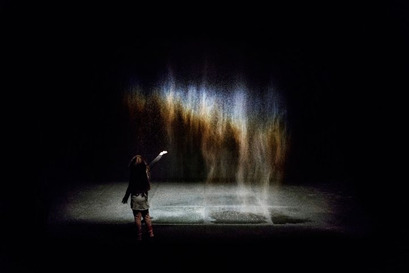
Olafur Eliasson Beauty 1993 Installation view at Moderna Museet, Stockholm, 2015 Photo: Anders Sune Berg Museum of Contemporary Art, Los Angeles © 1993 Olafur Eliason

Olafur Eliasson Moss wall 1994 Installation view: Moderna Museet, Stockholm, 2015 Photo: Anders Sune Berg Courtesy of the artist; neugerriemschneider, Berlin; Tanya Bonakdar Gallery, New York / Los Angeles © 1994 Olafur Eliasson
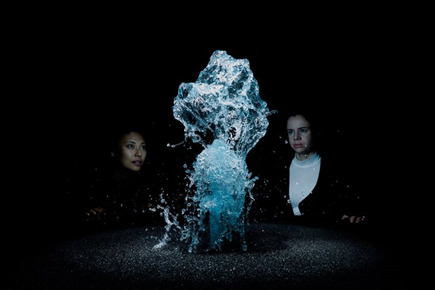
Olafur Eliasson Big Bang Fountain, 2014 Installation view at Moderna Museet, Stockholm, 2015
Photo: Anders Sune Berg Courtesy of the artist; neugerriemschneider, Berlin; Tanya Bonakdar Gallery, New York / Los Angeles © 2014 Olafur Eliasson

Olafur Eliasson Stardust particle 2014 Photo: Jens Ziehe Tate Collection © 2014 Olafur Eliasson
Exhibition has been organised by Tate Modern in collaboration with Guggenheim Museum Bilbao
Exhibition curated by Mark Godfrey, Senior Curator, International Art, Tate Modern with Emma Lewis, Assistant Curator, International Art, Tate Modern
Recycle for 20% off an exhibition t-shirt
Do you have any old T-shirts you don’t wear anymore? Bring them into Tate Modern for reuse or recycling and you will get a 20% discount on an Olafur Eliasson exhibition T-shirt. Members will also receive their further 10% membership discount.
Every year in the UK, over 300,000 tonnes of clothing goes to landfill. Much of this could still be worn by someone else and the rest could be recycled, by turning it into cleaning wipes or insulation. As sustainability is a key theme in Eliasson’s work, Tate and Studio Olafur Eliasson have teamed up to introduce a system for recycling your old T-shirts that we hope will become part of future Tate exhibitions.
This exhibition brings together over 40 works of art made between 1990 and today by the Danish-Icelandic artist Olafur Eliasson. Born in 1967, Eliasson has created a broad body of work that includes installations, sculptures, photography and paintings. The materials he uses range from moss, glacial melt-water and fog, to light and reflective metals. Eliasson’s art comes from three particularly important interests. These are: his concern with nature, honed through his time spent in Iceland; his research into geometry; and his ongoing investigations into how we perceive, feel about and shape the world around us.
Eliasson puts experience at the centre of his art. He hopes that as you encounter it, you become more aware of your senses. You add meaning to the works as you bring your associations and memories to these experiences. You might also become more aware of the people around you with whom you form a temporary community. For Eliasson, this heightened awareness of yourself and other people creates a new sense of responsibility. Ultimately, he believes that art can have a strong impact on the world outside the museum.
Eliasson runs a studio in Berlin with technicians, architects, archivists, art historians, designers, filmmakers, cooks, and administrators. Exhibitions and commissions take place all over the world. Eliasson and his studio team collaborate with architects, policymakers, chefs, activists, musicians and choreographers. Developing from his interest in light and in the environment, Eliasson has launched projects addressing sustainable energy and the climate emergency. In the last part of this exhibition, you can discover how these projects emerge from the research that takes place in the studio. Downstairs in Tate’s Terrace Bar, you can also sample the organic vegetarian dishes developed in collaboration with the chefs at Eliasson’s studio. There is no fixed route through the exhibition. The works can be experienced in any order, but the map will help you navigate. More information on the works in the exhibition is on www.olafureliasson.net
Please note, BIG BANG FOUNTAIN includes flashing lights.
#OlafurEliasson
MODEL ROOM
This case contains around 450 models, prototypes and geometric studies of various sizes. Together, they form a record of Olafur Eliasson’s work with his studio team and with Icelandic artist, mathematician and architect Einar Thorsteinn (1942–2015).
Between 1996 and 2014 Thorsteinn and Eliasson collaborated on several projects and researched the geometric forms, symmetries and ratios that structure a number of Eliasson’s sculptures and pavilions. One of the modular shapes you see here, for example, is a study for Your spiral view 2002 which is installed in this exhibition.
These models are made from different materials including copper wire, cardboard, paper photocopies, Lego, wood, foam and rubber balls. For many years, they served as a reference ‘library’ for Studio Olafur Eliasson. Now, Model room is held at Moderna Museet, Stockholm, but the studio, and particularly its design and geometry teams, continues to create models and prototypes as part of its research.
EARLY WORKS
This room brings together many of Eliasson’s earliest works and reveals interests that continue to motivate his art today.
Window projection 1990, Wannabe 1991 and I grew up in solitude and silence 1991 were made while Eliasson was still at art school. They use different kinds of light to alter the experience of space and architecture. As with many of Eliasson’s works of this time, the mechanism is very simple and never concealed from view.
Eliasson has long been interested in nature and the weather. From the start, he connected his experiences of the Icelandic landscape to the practice of making sculpture. Some works like Wavemachines 1995 replicate natural phenomena. Other works such as Regenfenster (Rain window) 1999 recreate the effects of weather conditions. In Moss wall 1994, created from Scandinavian reindeer lichen, Eliasson adds an unexpected material from outdoors to the controlled indoor space of the museum. The aroma and texture of the work affect the senses too.
These interests in illumination, nature and perception also led to early installations, such as Beauty 1993 and No nights in summer, no days in winter 1994 that you can find in the two spaces beyond this room.
KALEIDOSCOPES
Eliasson has been making kaleidoscopes since the mid-1990s. In this room, an older work, Your spiral view 2002 and a recent work Your planetary window 2019 are brought together.
For the artist, the kaleidoscope offers more than just a playful visual experience. Multiple reflections fracture and reconfigure what you see. You are offered different perspectives at once, and understand your position in new ways. You might let go of the sense of being in command of space, and instead enjoy a kind of uncertainty. Eliasson often uses the kaleidoscope to bring together the space inside and outside an exhibition. The appearance of both changes as the boundary between the gallery and the world outside is dissolved.
Eliasson has made a series of hanging spheres including the two outside the exhibition and a new work, In real life 2019 here. Each is structured by a complex yet regular geometric principle. The artist is particularly interested in spirals, as they create a sense of energy within the object and outside it through the shadow and light play on the surrounding walls.
GLACIAL WORKS
Eliasson often uses glacial ice in his work. Sometimes, the ice is intended as a call for action against the climate emergency. Warmer climates have caused the Greenland ice sheet to lose around 200–300 billion tonnes of glacial ice each year, a rate that is expected to increase dramatically. Ice Watch, which was staged in front of Tate Modern in 2018, is an installation of ice blocks fished from the water off the coast of Greenland. It offered a direct and tangible experience of the reality of melting Arctic ice.
Other works, like those in this room, are a more abstract reference to the changing environment. In Glacial currents 2018, chunks of glacial ice were placed on top of washes of coloured pigment. This created swells and fades of colour as they melted onto the paper beneath. In The presence of absence pavilion 2019, a bronze cast makes visible the empty space left by a block of glacial ice that melted away. Glacial spherical flare 2019 is constructed with glass made from small rock particles created by glacial erosion.
ICELAND
Eliasson visited Iceland regularly in his childhood and still has a strong connection to the country’s landscape. Over the years he has created photographic series that document the country. He has described Iceland as a place he needs to engage with physically – by climbing, walking, swimming or even water rafting. He took the photographs in The river-raft series 2000 from a raft as it was swept downstream.
Spending time in Iceland means Eliasson has witnessed firsthand how global warming is causing its glaciers to melt. This room includes a series of photographs of Iceland’s glaciers photographed by Eliasson in 1999. This will be joined in the autumn by a brand-new series taken in 2019 which show the changes in this landscape that are happening now.
Eliasson’s time in Iceland also attuned him to atmospheric conditions. This led to his interest in how artists have captured light throughout history. In Colour experiments 2019, Eliasson analysed the colour palettes of two paintings by German artist Caspar David Friedrich (1774–1840) that depict the vastness of nature:
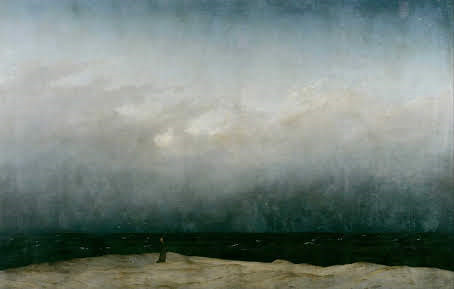
Der Mönch am Meer (The Monk by the Sea) 1808–10,
And
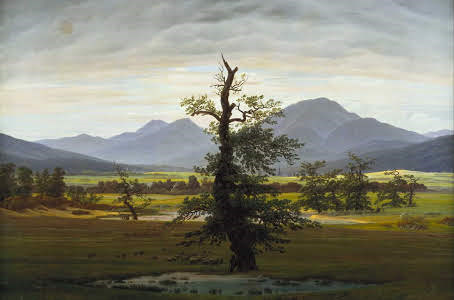
Der einsame Baum (The Lonely Tree) 1822.
Each painting was abstracted into all the colours it contains. These were then distributed 93 proportionately around each canvas to form an alternative colour wheel.
Dividing this room from the next is Suney 1995, an early example of Eliasson’s interest in colour, architecture and perception.
THE EXPANDED STUDIO
For some time, Eliasson’s practice has extended beyond making artworks, exhibitions, and public sculptures. He has worked – with his studio and with outside collaborators – on architectural projects, a cookbook, an art school, and on dance projects. He has founded an architectural practice, called Studio Other Spaces, with his long-time collaborator Sebastian Behmann, and initiated projects directly addressing issues facing the world today. These include projects to do with renewable energy (Little Sun), climate change (Ice Watch) and migration (Green light – An artistic workshop). These build on Eliasson’s long-held interests in the environment, light and community that led him to make the kinds of works in this exhibition.
The Expanded Studio evokes the broader interests and activities that Eliasson’s studio in Berlin pursues. The long pin-board wall here is based on the walls in the studio where teams of researchers and craftspeople, as well as Eliasson himself, share questions, articles, images and news clippings. The materials here are arranged around keywords in alphabetical order.
There are also films showing some of these projects in action – Little Sun, Green light and Ice Watch – as well as impressions of his architectural projects and of life in his studio. You can watch these films at home at www.soe.tv.
On the circular table, you will find Eliasson’s work The structural evolution project, first staged in 2001. Using Zometool sticks and connectors, you can collaborate to build and rebuild structures and shapes. Every other Wednesday, there will be a live link up with the studio showing daily life and a range of projects and activities taking place there.
ICE WATCH
For Ice Watch, Eliasson and geologist Minik Rosing install blocks of glacial ice in public places.
The ice is fished out of the Nuup Kangerlua fjord in Greenland after becoming detached from the ice sheet. As a result of global warming, more icebergs are being produced, which is contributing to rising sea levels. Warmer climates have caused the Greenland ice sheet to lose around 200–300 billion tonnes each year, a rate that is expected to increase dramatically. Eliasson and Rosing hope that Ice Watch will raise awareness of the climate emergency by providing a direct and tangible experience of the reality of melting artic ice. Visitors can look at it, move around it and touch it.
Ice Watch was first installed at City Hall Square, Copenhagen in 2014, to mark the publication of the UN IPCC’s Fifth Assessment Report on Climate Change. In 2015 it was shown at Place du Panthéon to mark the publication of the UN IPCC’s Fifth Assessment Report on Climate Change. The third version of Ice Watch was on view from December 2018 to early January 2019 at two locations in London – outside Bloomberg’s European headquarters and in front of Tate Modern.
When they were installed outside Tate Modern, each of the ice blocks weighed between 1.5 and 5 tonnes. The carbon cost for bringing the 30 blocks of ice to the two sites in London was approximately equal to flying two school classes (52 students) from London to Greenland and back to witness the melting of the Greenland ice sheet. In comparison, hundreds of thousands of visitors experienced Ice Watch in London and connected with the issue of the climate emergency.
ARCHITECTURE
Eliasson’s interests in movement, light and space have led him to create many large-scale installation works, as seen in this exhibition. Early in his career he also began working on free-standing structures and pavilions. Eliasson hopes his geometric experimentation will help us create new forms that challenge the usual ways of building and moving about spaces.
Over the years, this multidisciplinary approach has grown in size and scope. It includes works such as Your rainbow panorama 2006–11, located on top of ARoS, Aarhus Art Museum in Denmark; the facades of Harpa Reykjavik Concert Hall and Conference Centre in Iceland 2005–11, created with Henning Larsen Architects; and Cirkelbroen (Circle bridge) 2015, a pedestrian bridge in central Copenhagen.
Fjordenhus 2009–18, in Vejle, Denmark, was the first full building that Eliasson and his studio designed with his long-time collaborator, architect Sebastian Behmann. The building is constructed entirely around circles and curves. Every detail was planned by Eliasson and the studio, down to the tables and lamps and the patterns of the bricks. In 2014 Eliasson and Behmann set up an architectural office, Studio Other Spaces, to focus especially on large-scale projects that span art and architecture.
STUDIO OLAFUR ELIASSON KITCHEN AT THE TERRACE BAR
Please visit the SOE Kitchen at the Terrace Bar downstairs. Soups, salads, bread and cakes based on those served in the studio are available, and the Terrace Bar has been transformed to reflect the atmosphere of Eliasson’s kitchen in Berlin. You are invited to eat, family-style, at tables similar to the studio’s, surrounded by artworks and lamps by Eliasson.
#adcancedresearchmethods#galleryvisit#olafureliasson#week3#6IMAG001W#MajorProject1#baphotography#2020#research
1 note
·
View note
Photo

Ed Atkins at Serpentine Sackler Gallery, London (2014)
via http://moussemagazine.it/ed-atkins-serpentine-2014/
5 notes
·
View notes